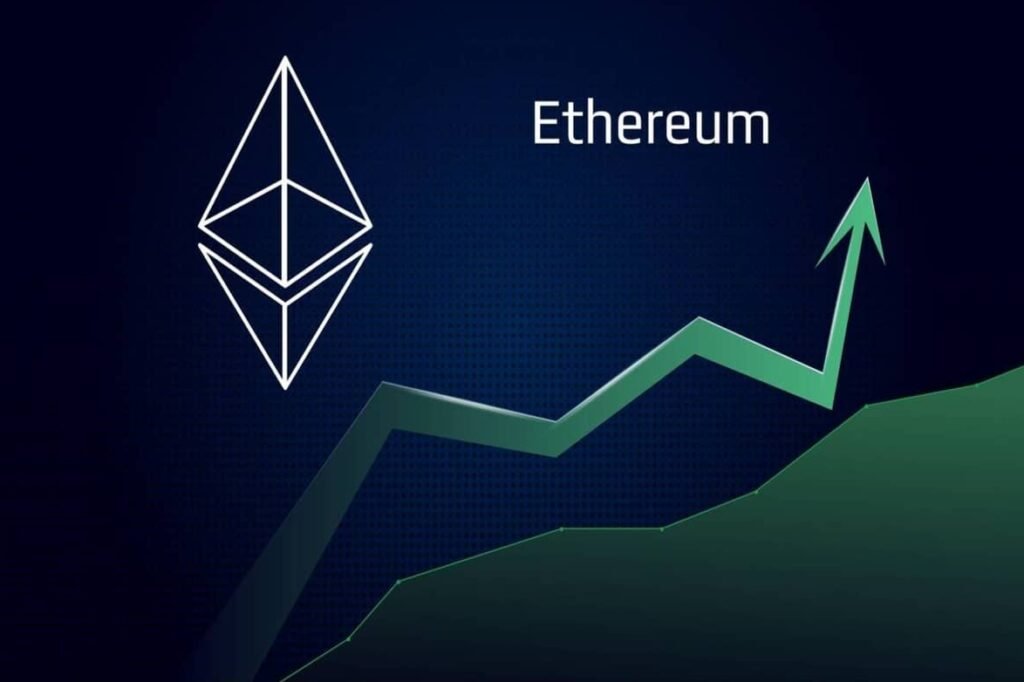Following a time of extreme profit-taking, Ethereum ( ETH) is showing indications of recovery after a turbulent beginning to the year as investors get back into the market. Driven by market attitude, macroeconomic trends, and important Ethereum ecosystem advancements, the second-largest cryptocurrency by market capitalization has seen notable price swings. Now, with purchasing momentum steadily gathering, investors are eagerly watching to see whether ETH will sustain a significant climb.
Reaching a local high above $4,000, the Ethereum Price surge towards the end of 2024 broke past many important resistance levels. The Dencun upgrade’s optimism, as well as the general positive attitude in the crypto market, drove most of this jump. Still, both retail and institutional investors profited heavily from this movementAccording to data from on-chain analytics platforms, over $2.5 billion worth of ETH was sold during the period, which caused the biggest notable single-week liquidation of Ethereum futures holdings in more than two years. The unexpected sell-off resulted in a quick correction, with ETH dropping around 13% in a few days.
Whale accounts, big ETH holders who often shape market patterns, drove most of this episode of strong selling activity. These companies started off releasing their shares as ETH neared overbought levels, indicating the market was about to cool down. Though it hurts short-term holders, the profit-taking phase sets the groundwork for better market dynamics by resetting important metrics.
Ethereum’s foundations are sturdy even with the brief downturn; investors have started building again. Clearly indicating that big holders are confident in Ethereum’s long-term potential, the top 10,000 Ethereum wallets added approximately 860,000 ETH to their accounts between late March and early April 2025.

This accumulating wave fits historical trends found in past market cycles. Seasoned investors typically re-enter the market to benefit from lowered prices following strong corrections. Worth around $3.1 billion at the time, the current build offers a strong basis for a possible comeback. Furthermore, on-chain data reveals a drop in exchange inflows, implying fewer investors want to sell. ETH is instead progressively entering cold wallets and long-term storage, therefore limiting supply and raising demand for prices.
The rising importance of institutional investors in the Ethereum market in 2025 is among the most obvious changes. Particularly in the United States and Europe, Ethereum-based exchange-traded funds (ETFs) have received unprecedented first-quarter inflows. For one month, BlackRock’s ETHA ETF drew net investments of around $570 million.
This increase in institutional interest is noteworthy since it gives ETH a more diversified and steady source of investors. Institutions are less prone to respond emotionally to short-term volatility and usually invest with longer time horizons. Their involvement also provides the asset class with more credibility and access to bigger capital pools.
Furthermore, Ethereum’s attractiveness as a yield-generating asset following the Merger has continued to develop. In a low-interest-rate environment, ETH provides an appealing return when staking payouts average between 4% and 6% annually compared to conventional fixed-income instruments. As institutional staking services grow, big investors can more easily participate in network validation and generate passive revenue.
Technically, Ethereum must balance numerous significant degrees of resistance and support to decide its future direction. The immediate opposition resides in the psychologically and technically important $2,800 to $3,000 zone. Especially with considerable volume, a breakout over this level might drive ETH toward its next goal at $3,400 and finally toward the $3,732 level that defined local highs in 2024.
On the downside, Ethereum has main support between $2,300 and $2,100. Historically, these zones have been gathering places and, should ETH retreat, they probably draw buyers. Maintaining optimistic momentum will depend on one’s keeping above these supports.
Moving averages and the Relative Strength Index (RSI) also suggest a possible reversal of the trend toward optimism. Recovering from oversold levels, the RSI is now in a neutral area, implying ETH has space to climb higher. Concurrently, the 50-day moving average is nearing a crossover with the 200-day moving average; this pattern is sometimes referred to as a “golden cross,” and usually signals a positive future.
Beyond mere market action, Ethereum’s fundamental underwriting keeps getting better. The Dencun upgrade’s effective execution greatly improved two of the network’s most enduring issues: transaction efficiency and gas fees. Attracting developers and new initiatives depends on Ethereum’s increased scalability and user-friendliness resulting from these developments.

Moreover, Layer 2 ideas, including Arbitrum, Optimism, and Base, are becoming popular since their aggregate total value locked (TVL) surpasses $25 billion. These networks improve Ethereum’s throughput while preserving the security of the main net, therefore strengthening and expanding the ecosystem.
Further supporting its leadership as the main smart contract platform are the expansion of distributed finance (DeFi), non-fungible tokens (NFTs), and real-world asset tokenization on Ethereum. Long-term adoption looks bright since big companies like Visa and JPMorgan have been investigating Ethereum for settlement and payment system capability.
The revival of Ethereals also depends on more general macroeconomic factors. In the United States and the Eurozone, inflation is gradually declining as of mid-2025, which fuels conjecture that central banks could follow more accommodating policieLower interest rates usuallytes benefit risk ass,ets including cryptocurrency.
Still, a possible obstacle is regulatory uncertainty. The U.S. Securities and Exchange Commission (SEC) keeps assessing the situation of Ethereum and allied goods. Although current events point to a more positive future, including acceptance of ETH ETFs, any negative decision could affect investor attitude. Still, Ethereum’s distributed architecture, worldwide developer community, and expanding use cases help it to be more resistant to regulatory shocks than lesser cryptocurrencies.
Looking ahead, whether investor confidence keeps rising and whether purchasing momentum can overcome residual selling pressure will probably determine the path of Ethereum’s Price Decline. If institutional inflows stay robust and whales keep accumulating, ETH might surpass $3,000 and create conditions for a revisit of its all-time high close to $4,80.
Although short-term volatility is to be expected, particularly given approaching macroeconomic and regulatory uncertainty, Ethereum’s long-term future seems bright. Given a strong foundation of technological innovation, increasing acceptance, and favorable supply dynamics, ETH is positioned to be a pillar of the digital asset ecosystem.
